CES 2019: Tech preview of the expo's hottest new gadgets
- Published
WATCH: A hi-tech sun cream sprayer that won't leave you with sticky hands will be at CES
The CES trade show is powering up again in Vegas. Most of the biggest names in tech and stacks of start-ups you've never heard of will compete for attention over the next week.
Some products may launch new categories, external - past events presented a first look at video cassette recorders (VCRs), organic light-emitting diode (OLED) TVs and Android tablets. But many more will flop or never even make it to market.
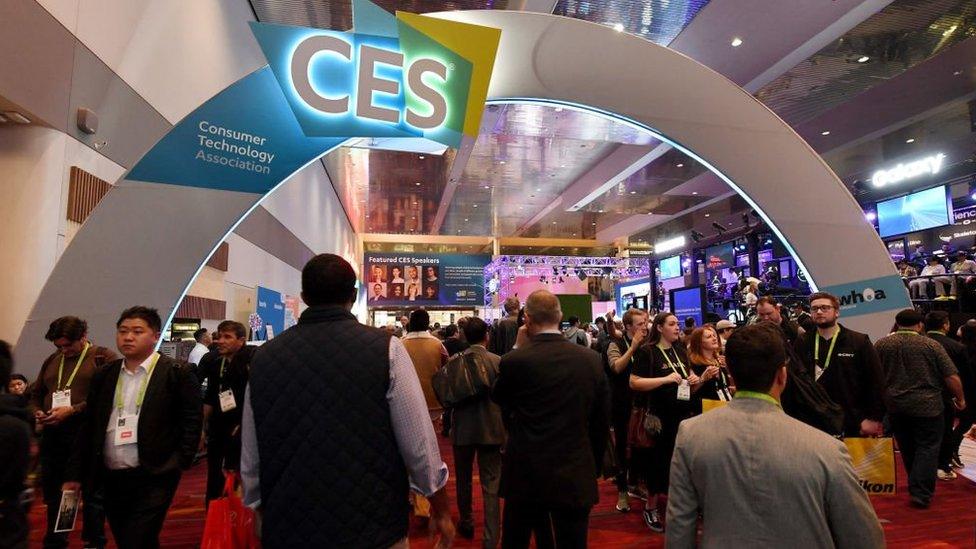
More than 4,500 exhibitors are attending CES and more will take part in fringe events or host private demos in hotel suites
We've scoured the internet for hints about what will be on show...

AI assistants and smart living
One of the biggest developments at the last few CES expos has been Amazon Alexa and Google Assistant's rival efforts to extend their reach in the home and beyond.
Last year things peaked with an Alexa-activated toilet flush, but over the past 12 months manufacturers have developed voice-controlled "skills" or "actions" for more products, and in some cases embedded one of the virtual assistants outright.
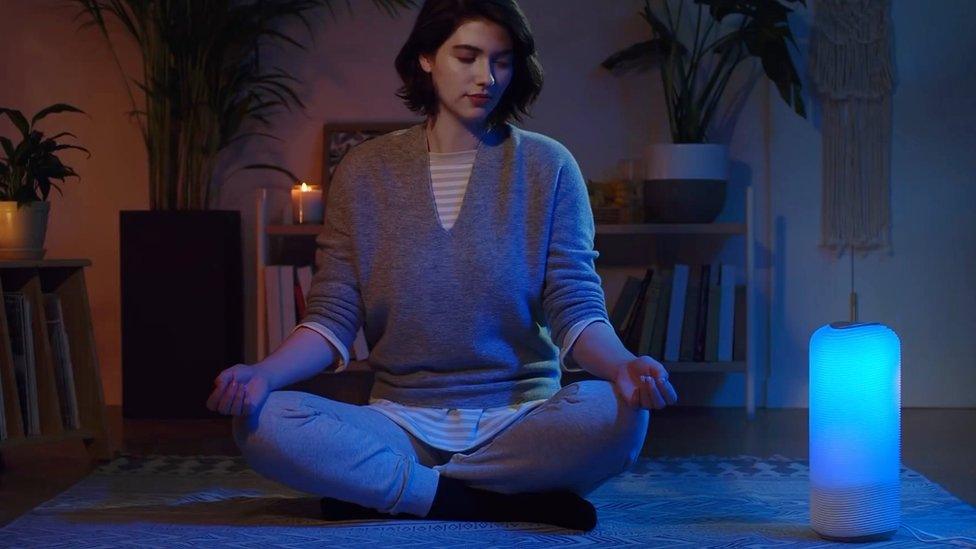
The Auri Lamp has Alexa built in, so you can use it to begin a meditation routine or to make fart sounds
For 2019, we're being promised tags that will let smart speakers tell you where your pet or TV remote is hiding, as well as Alexa/Google Assistant-controlled pianos, heart rate monitors, lawnmowers, motorcycle helmets and meditation lamps.
That's not to say others aren't trying to muscle in.
Samsung is rumoured to be revealing a fresh Galaxy Home speaker powered by its smart assistant Bixby, and German start-up Autolabs will demo Chris - a virtual helper designed for use in cars.
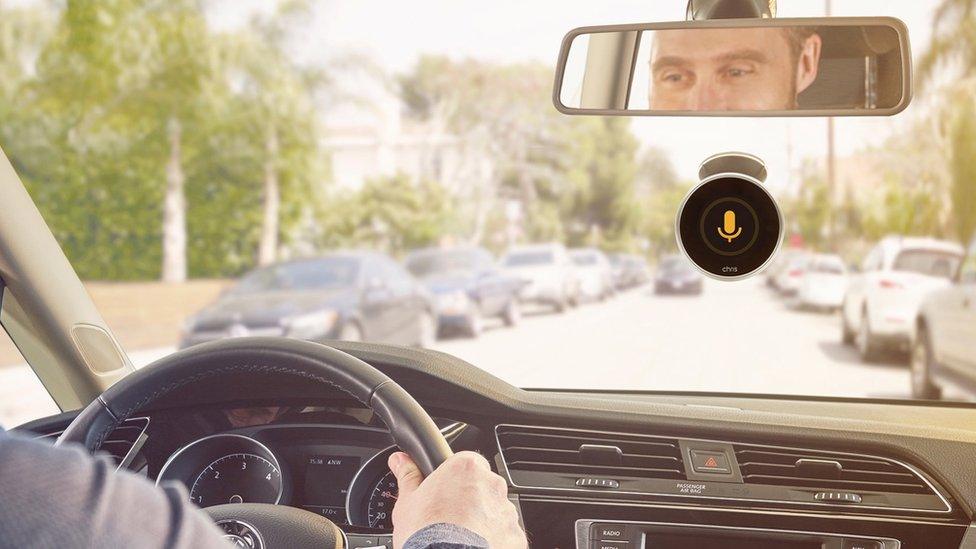
The makers of Chris say it will only run apps that are safe to use while driving
Several firms will also urge developers to get behind "open source" alternatives, in which neither of the two tech giants act as gatekeeper to the apps on offer.
For example, Volareo will show progress on a crowdfunded smart speaker that lets you buy Bitcoin and stream any video to your TV.
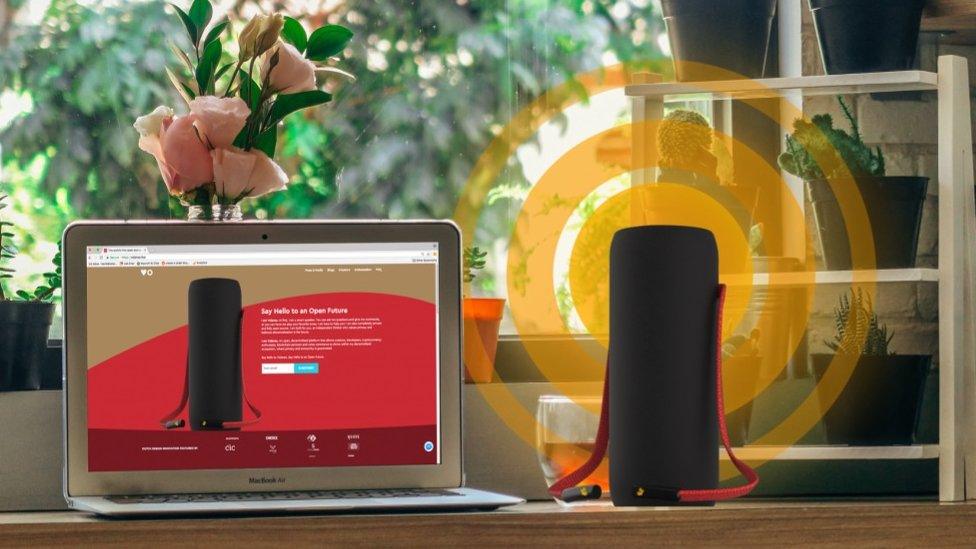
Volareo is being pitched as a smart speaker for "independent thinkers"
Others will be pitching ways to drive the category forward.
So, for example, Elliptic Labs will demo a radar-like system that lets smart speakers detect their owners' approach. It suggests the tech could be used to trigger daily reminders or to make the speakers adjust their volume according to how close the person is.
Taking things one step further, Smart IoT Labs has Miranda - a kind of smart assistant for smart assistants that issues commands on your behalf to Alexa or Google based on your past behaviour, which sounds a bit bonkers.
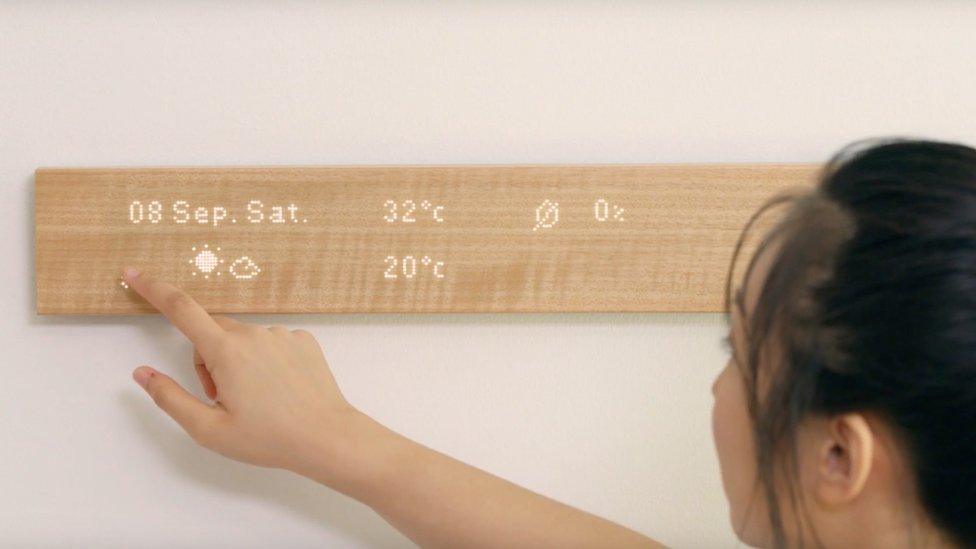
Mui's creator says it follows "distraction-free" design principles by only lighting up when in use
And for consumers still wary about talking to their tech, Mui Lab has a "calmer" alternative.
At first sight its product looks like a plank of wood, but when touched it lights up to provide a way to control Google's Assistant with swipes and presses rather than barked commands.

Food and drink
Nespresso has a lot to answer for.
The success of its pod-based coffee machines has inspired several start-ups to take the capsule-based concept and extend it to other kitchen gadgets.
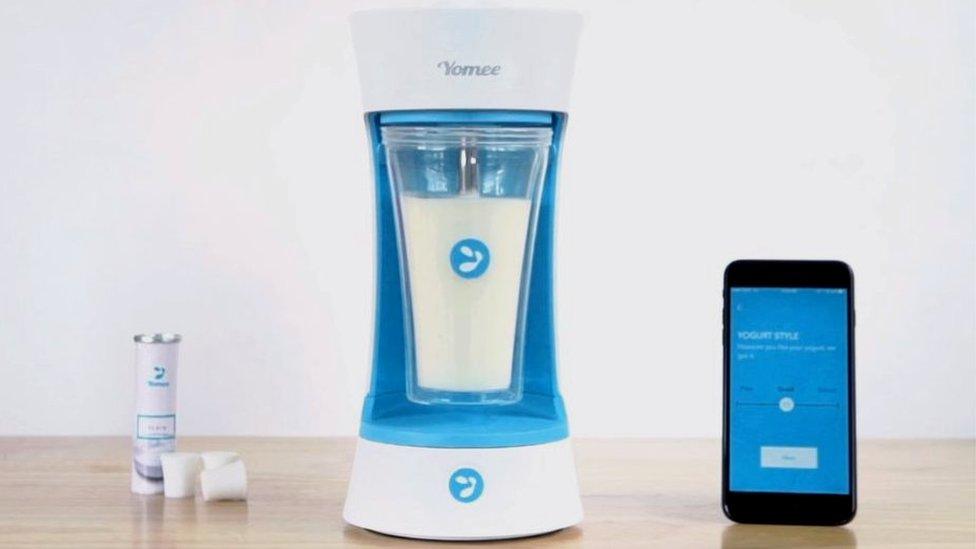
Yomee takes six hours to turn milk and a fruit flavour pod into yoghurt
Lecker Labs has Yomee - to which you add milk and the pod of your choosing to create yoghurt.
Mitte has a machine that passes water through a choice of cartridges to add rock minerals to it and avoid the need to buy bottles of the stuff.
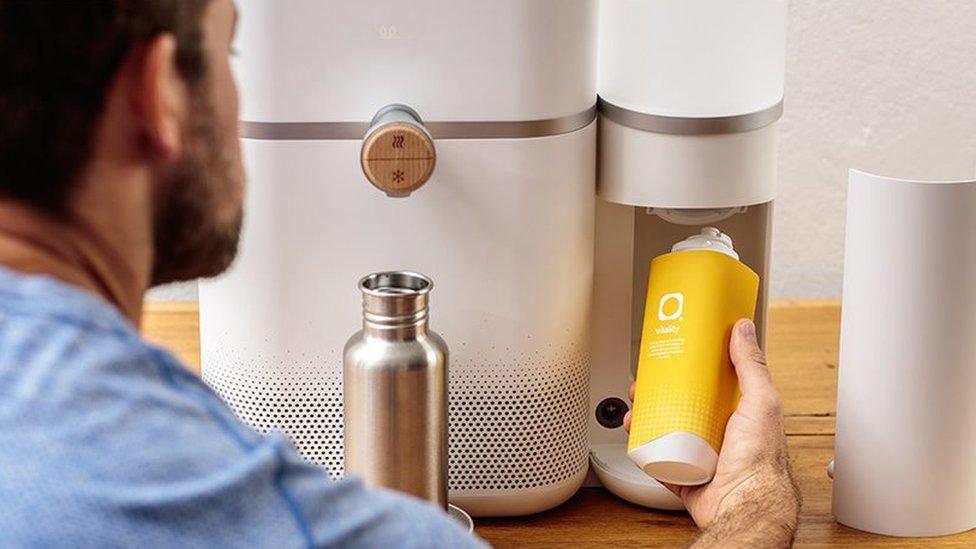
Mitte's mineral cartridges alter the water's pH value and taste in different ways
And even LG is getting in on the act with HomeBrew, a product that makes beer from single-use capsules containing malt, yeast, and hop oil. It's presumably targeted at drinkers who think "craft brewing" extends to a button push.
Meanwhile, Capsulier is back at CES with a production version of its DIY coffee and tea pods-maker, after recently starting shipments to its Kickstarter backers.
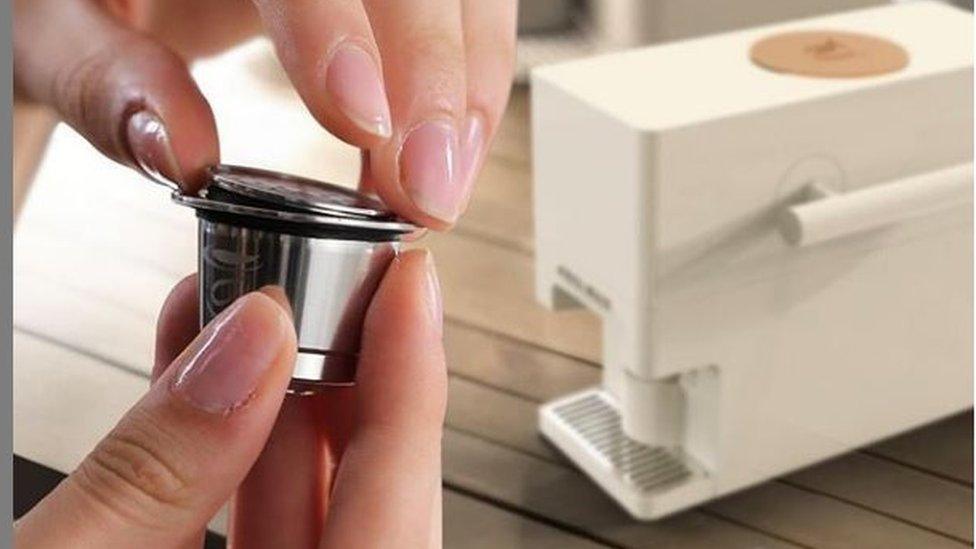
Capsulier says its Nespresso-compatible pods cost a fraction of what shop-bought equivalents cost to make
Switching tack, other intriguing foodie developments include gadgets that claim to help you improve your diet by analysing your breath.
Lumen says it will have a working prototype of its "hack your metabolism" device, which determines the proportion of carbs and fats being burnt for energy from the concentration of carbon dioxide in the air you exhale.
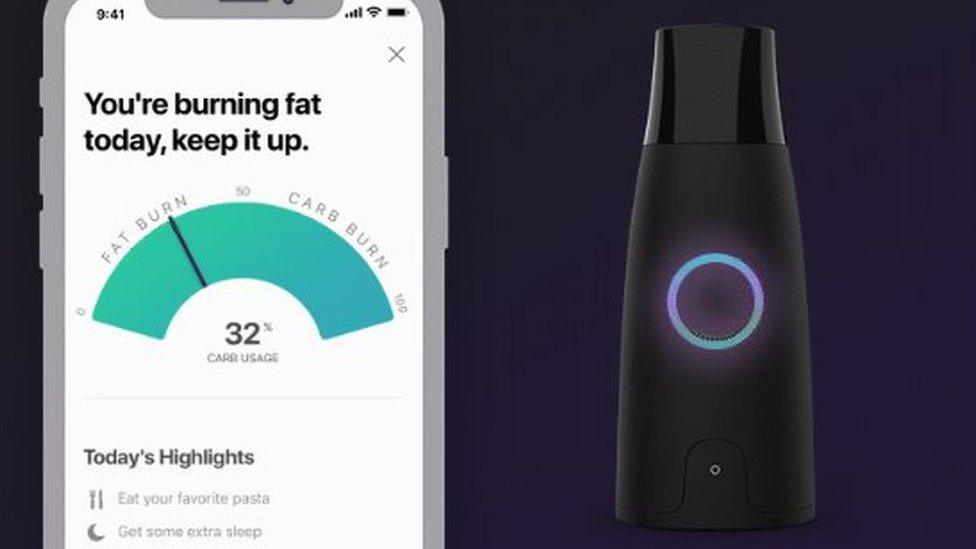
Lumen recommends what to eat and when based on its analysis of your breath
It then makes food recommendations based on the result.
By contrast, FoodMarble's Aire measures the hydrogen in your breath and combines this with a log of what you have eaten, to warn you of foods you should avoid and possible substitutions.
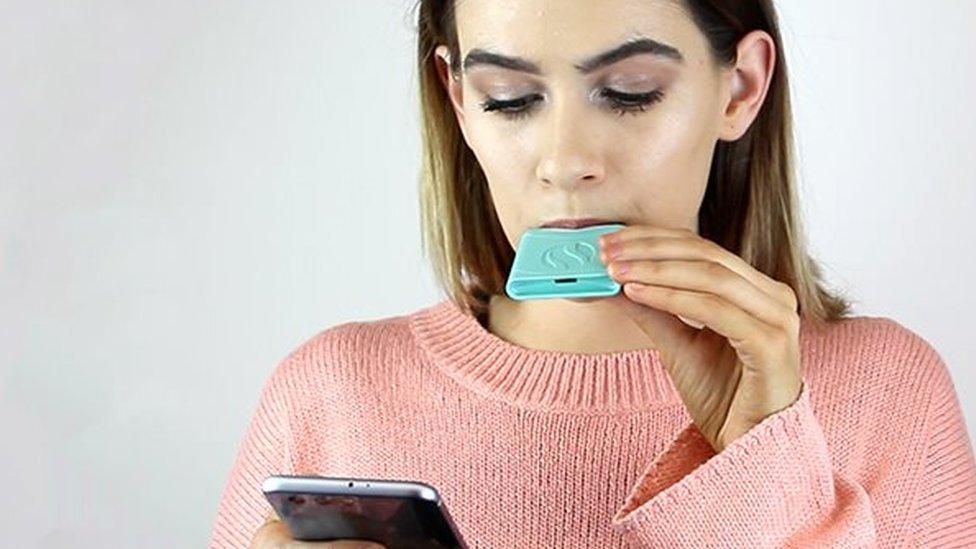
Aire is designed to discover which foods are being passed to the large intestine without being fully digested
There's always fancy new fridges at the show, but it's doubtful they have yet advanced to the point they can tell you when you need to eat each item by - the holy grail of kitchen tech.
But Ovie has an interim solution.
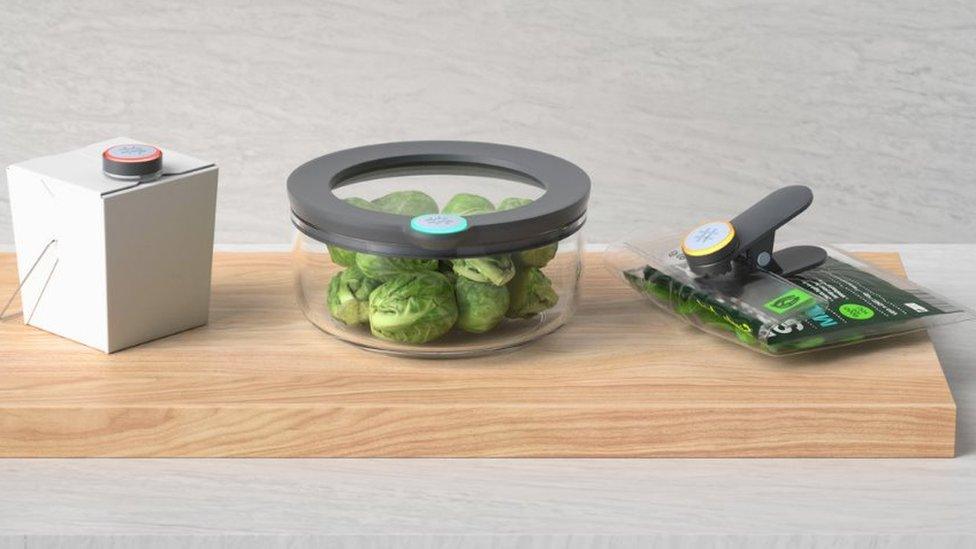
Ovie tags show you what foods are about to go off to encourage you to consume them before it's too late
It will show off SmartTags that you're supposed to attach to each foodstuff and identify to Alexa as you do so.
Their colour then changes as the food goes off, while an app suggests recipes to make from near-expired items.

Televisions
WATCH: LG showed off a concept rollable TV at CES 2018
TVs have been at the heart of CES ever since it started 52 years ago.
This year, the hot rumour is that LG will reveal a commercial version, external of a roll-up concept it previously demoed, meaning families can have a giant screen without sacrificing one of their walls.
Samsung may also have a rival set if a patent, sneaked out on Christmas Day,, external is anything to go by. Its design appears to open up horizontally rather than vertically.
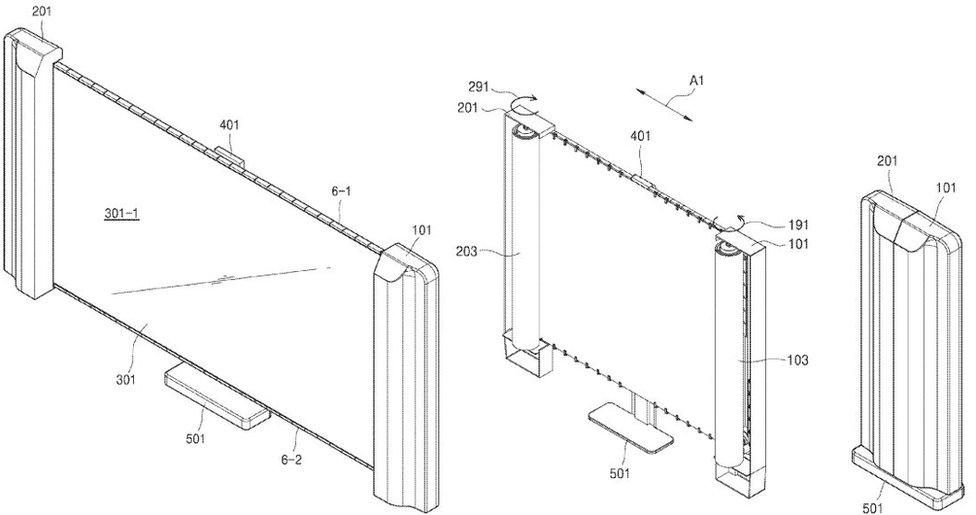
Samsung's patent describes how a flexible screen could be rolled up to pull in either of its two sides
Failing that, it's likely to have more to say on its modular MicroLED tech, in which lots of small panels are clipped together to form a screen. Last year it showed off a 146in (371cm) 4K display, but it needs to create smaller versions for the innovation to be practical in the living room.
Expect lots of talk about 8K too, with sets featuring four times as many pixels as today's 4K standard.
Japan's recent switch-on of the world's first "super high-definition" channel means there's now an audience for the feature, even if content elsewhere is in short supply.
Although stores already stock 8K models, existing units lack HDMI 2.1 ports. The new cable standard is required to provide enough bandwidth to send a 60 frames-per-second 8K signal over a single connection, as well as having other benefits.
LG has already confirmed it will debut the technology, external and other brands are likely to do likewise.
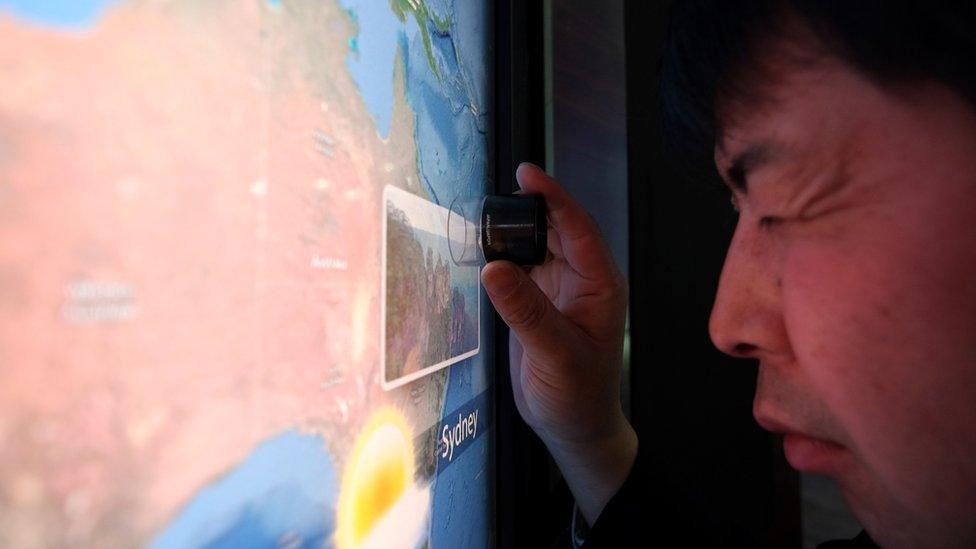
8K TVs allow you to get up close and still not be able to make out their individual pixels
The other development to watch out for is TVs featuring far-field microphones - the tech found in smart speakers that lets them be commanded from across a room.
This could free owners from having to use a remote control.
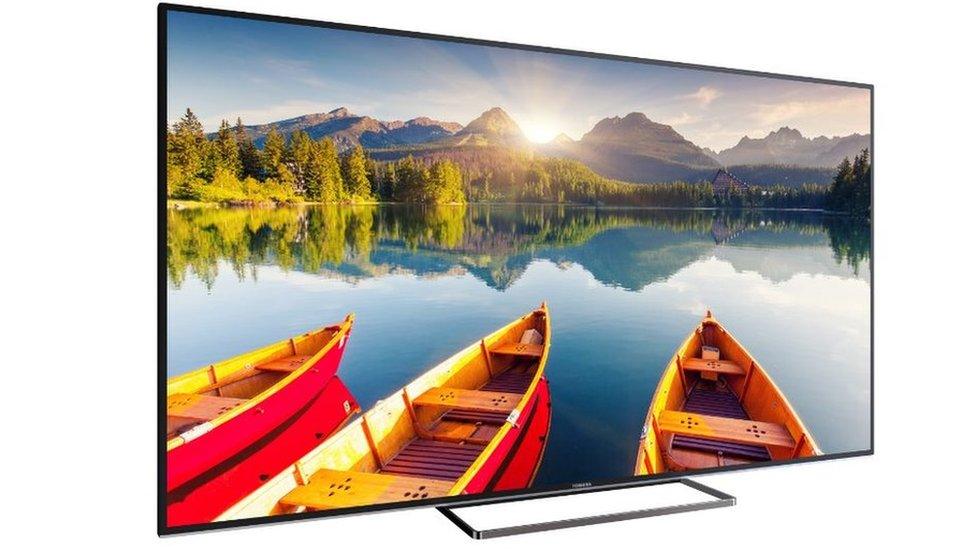
Toshiba announced in August that most of its 2019 TVs for Europe would listen out for voice commands
Toshiba has already announced one such model for Europe featuring Alexa. A wider roll-out could give Amazon and Google's smart assistants another gateway into people's homes.

Robots
Robot-makers at CES typically promise much, but their inventions often struggle to justify their existence. Worse - if you remember Cloi last year - they can have a tendency to misbehave.
But the lead developer of one of the category's rare success stories - Softbank's Pepper - is at CES this year with a droid that he believes has the capacity to "touch hearts".

Lovot robots have sensors across their bodies so they can detect where the owners are touching them
Kaname Hayashi will be demoing Lovot, a chick-like bot with large expressive eyes, flapping arms, wheels, and a wardrobe of clothes to cover its soft shell.
A camera protrudes from its head, allowing it to map rooms and act as a child monitor or home surveillance device.
But Mr Hayashi has said the purpose of Lovot is not to be helpful or entertaining, but rather to engender joy, love and other positive emotions that might help owners reach their true potential.
He's not the only one suggesting the time has come to welcome companion bots into our homes.

Kiki and Liku are at earlier stages of development than Lovot
There's Kiki, a "pet robot" designed by two former Google engineers, whose personality evolves according to how its owners treat it.
And Liku, a humanoid bot that promises to express "desires and emotions" driven by what's going on in its surroundings.
Others, however, remain focused on addressing more practical problems.
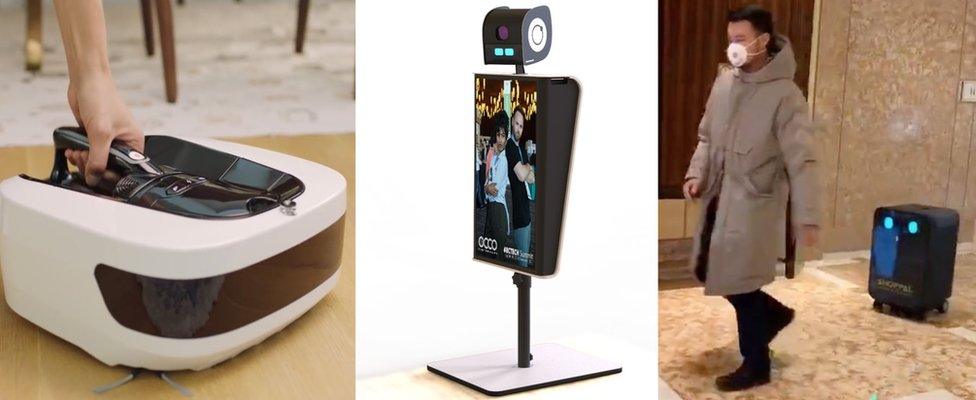
Several robots are designed for a specific use
Coral will show off what it says is the first robot vacuum to feature a detachable handheld unit.
Occo has a new version of its photo-taking model that interacts with guests at events before getting them to pose for automated snaps.
And Cowarobot follows up an earlier self-driving suitcase with ShopPal - a unit designed for use in stores to follow customers about, drawing their attention to promotions and offering to recharge their mobile devices.
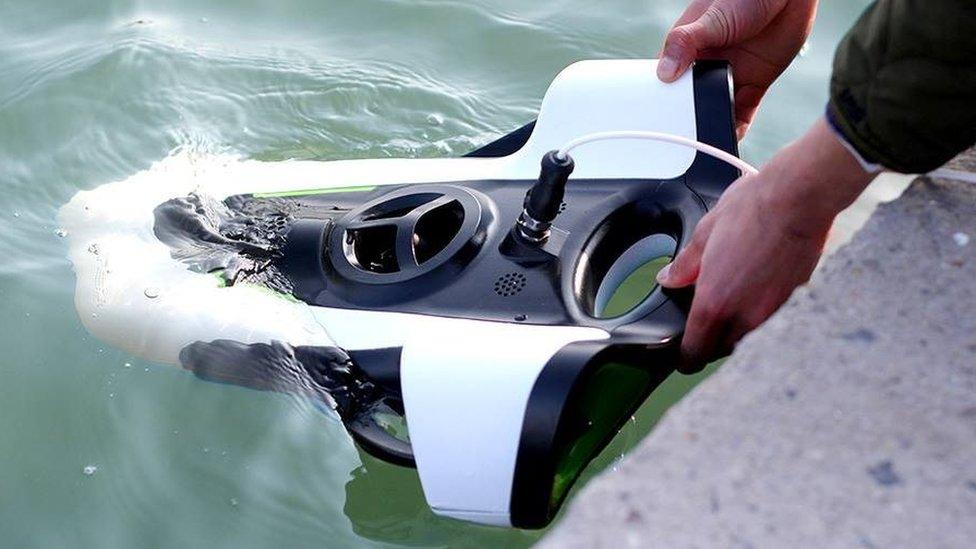
Youcan Robot's BW Space is one of several drones being promoted to underwater video-makers

Health and beauty
The US's opioid crisis, in which hundreds of people are dying every week after becoming addicted to pain medication, has driven several medical tech firms into action.
Several new products are based on neuromodulation therapy, which involves stimulating the spinal cord or peripheral nerves to try to interrupt pain signals before they reach the brain. The technique has been around since the 1980s, but traditionally required surgery for an implant.
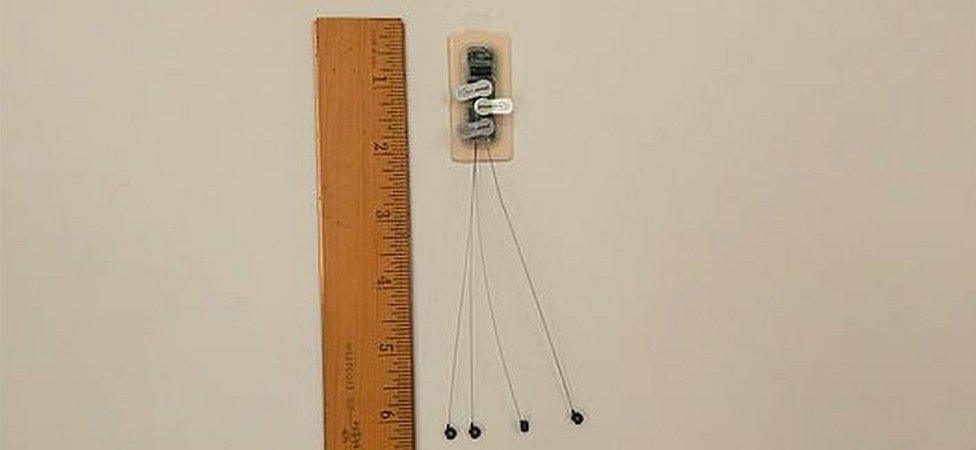
Lenus Freedom claims its device can help mitigate the symptoms of opioid withdrawal
Some start-ups, however, are attempting to offer non-surgical solutions.
They include Lenus Freedom, which says its electrical nerve field stimulator, external can be fitted by a physician in five minutes.
Meanwhile, PainCareLabs has a prototype called DuoTherm, external that it says alters nerve activity linked to back pain by applying heat and vibration pressure rather than electric pulses.
But experts have doubts.
"The challenge is far greater than these start-ups portray," Prof Sam Eldabe of the British Pain Society told the BBC.
"[One issue] is that tolerance develops to spinal cord stimulation in around 20% of subjects, and we know the same occurs for peripheral nerve stimulation."
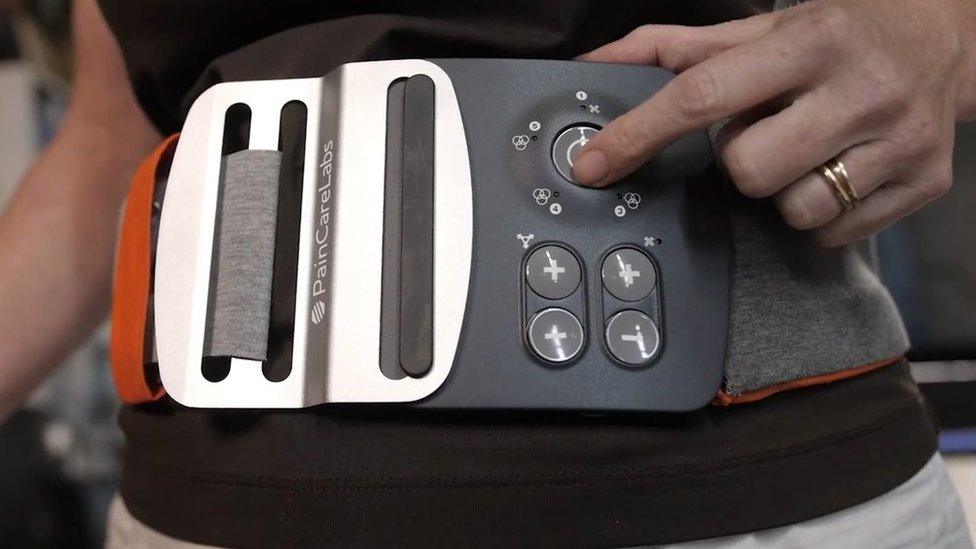
PainCareLabs says its device offers a drug-free treatment to back pain
For those who still need to take pills or regular injections, there's a barrage of new "smart" medication boxes in which to keep them.
Pillo appears to be the most elaborate example. The dispenser features an animated smart companion that uses facial recognition to ensure the right person gets the right dose at the right time.

Pillo can answer questions about nutrition and run video calls
It's worth being a bit sceptical about some of the supposed breakthroughs, though.
Lexilight's website, for example, claims the rapidly-flashing lamp it will display can help dyslexic people "read as fast as everyone else".
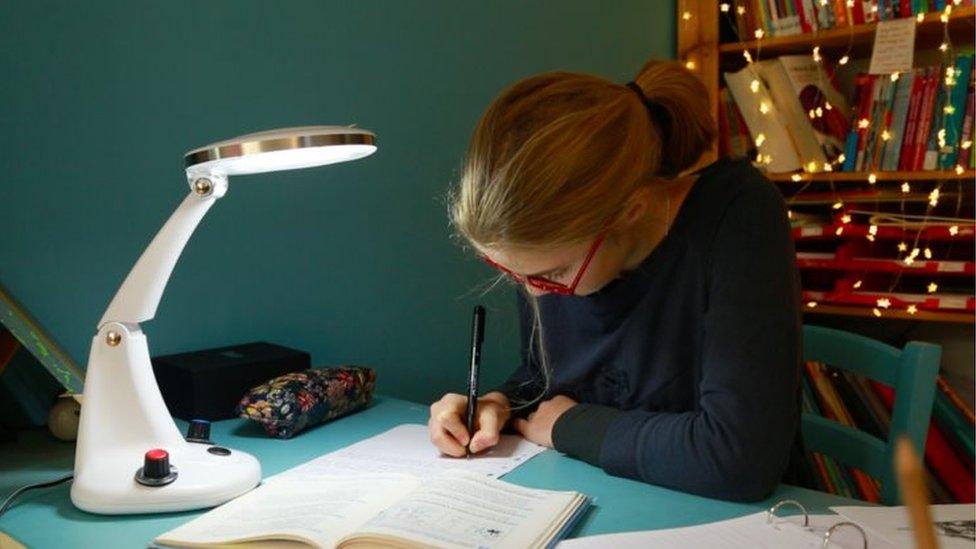
It's based on a theory that the condition is caused by an unusual arrangement of light-receptor cells in the eyes of those with the disorder.
But the scientists who proposed the idea said more tests were needed when they announced their theory last year, external, and several experts in the field were dismissive of it, external.

Is a 10-second clean with the Y-Brush really as effective as two minutes with an electric toothbrush?
Likewise, bold claims are being made of some of the beauty tech that will go on show.
Y-Brush, for instance, says its nylon-bristled mouthpiece can give teeth a "perfect" clean in 10 seconds.
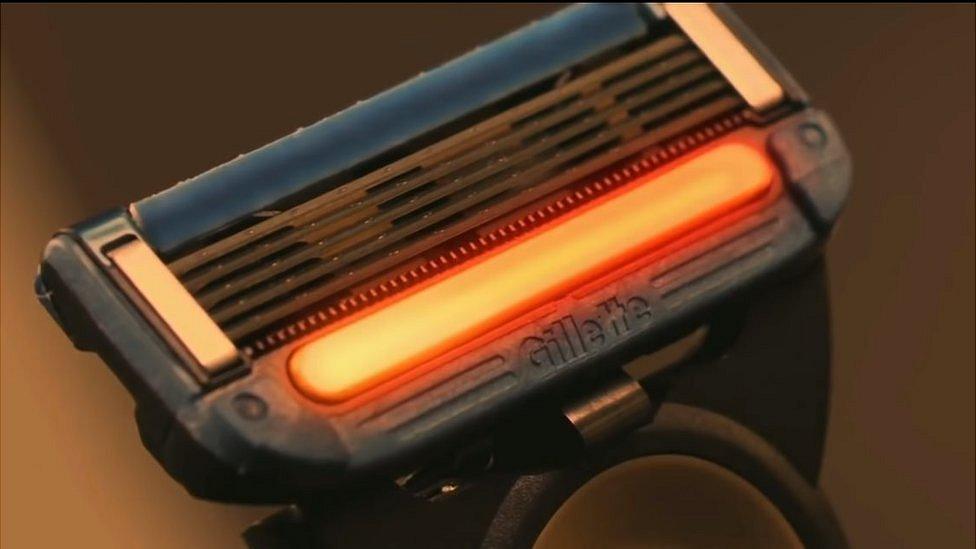
The GilletteLabs Heated Razor features four heat sensors and a bar that goes up to 50C (122F)
And Gillette claims a new razor with a battery-powered heating bar will increase glide and reduce tug to deliver the "comfort of a hot towel shave".

Smartphones and other computers
WATCH: Hands-on with the first bendy phone
At one point it looked like the big story of CES 2019 would be flexible phones.
China's Royole still intends to show off its smartphone-tablet hybrid the FlexPai, having demoed a pre-production unit in October.
But famed leaker Evan Blass has backtracked from claims that LG will unveil a version of its own.
Allow X content?
This article contains content provided by X. We ask for your permission before anything is loaded, as they may be using cookies and other technologies. You may want to read X’s cookie policy, external and privacy policy, external before accepting. To view this content choose ‘accept and continue’.
Allow X content?
This article contains content provided by X. We ask for your permission before anything is loaded, as they may be using cookies and other technologies. You may want to read X’s cookie policy, external and privacy policy, external before accepting. To view this content choose ‘accept and continue’.
The BBC understands Huawei is also biding its time. And that means Samsung - which has already given the world a brief glimpse of its foldable Galaxy X - is likely to wait until February's Mobile World Congress to properly show off the device.
Instead, your best bet of seeing a big-name brand with new folding tech may be Intel and its Copper Harbor dual-screened Windows PC.
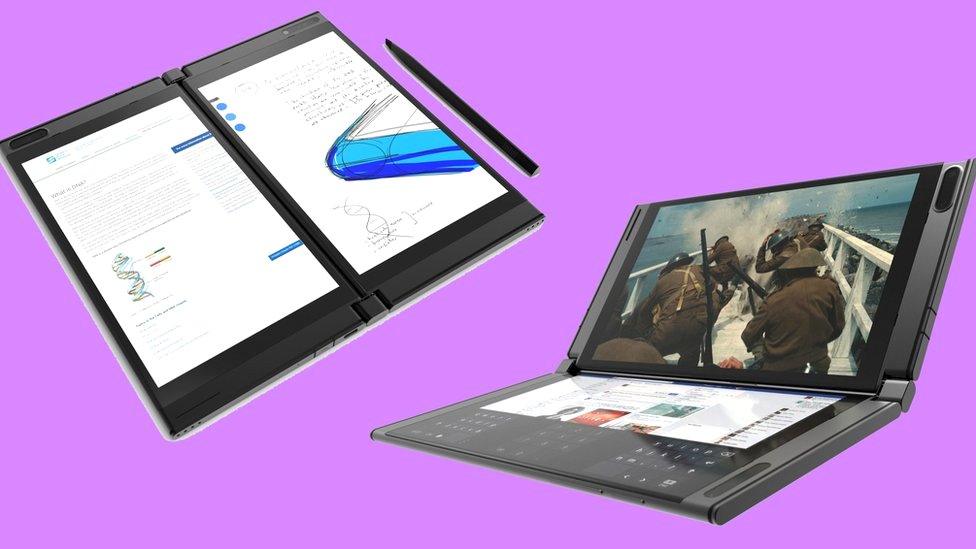
Intel's Copper Harbor prototype can be used in a variety of modes
The chip-maker showed off a prototype in Singapore three months ago, but has yet to make a big fuss about the concept.
Its two touchscreen panels can work together as a single big display, or let one act as a keyboard or scribble pad.
For those looking to give their existing laptop more screen real estate, Mobile Pixels may have the solution.
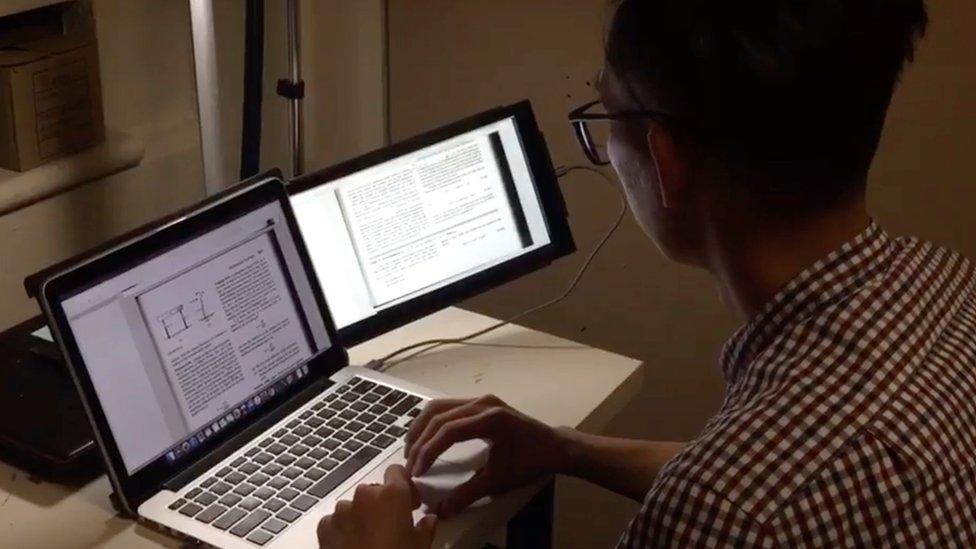
Having two screens on view should help workers boost productivity but will eat into battery life
Its Duo accessory attaches a second display to the back of the main screen that can either be slid out to extend the view or be faced outwards to show off what the user is up to.
Two start-ups from different sides of the world appear to have simultaneously invented another unusual peripheral.
France's Nemeio and Australia's Sonder Design have created keyboards with small e-ink displays beneath each key.

In addition to icons, the keyboards can also display non-Latin letters, which could make them a practical choice for typing in Chinese or Arabic
Users can switch from a Qwerty letter-layout to other designs, and also replace the characters with icons of their choosing to suit specialist applications or games.

Drones
December's shutdown of Gatwick Airport is likely to be referenced by US Secretary of Transport Elaine Chao, who is giving a keynote speech, external that will address the promise and risks of consumer drones.
But on the show floor, the biggest player in the business - DJI - has a positive story of its own to sell with a new model designed for the emergency services.
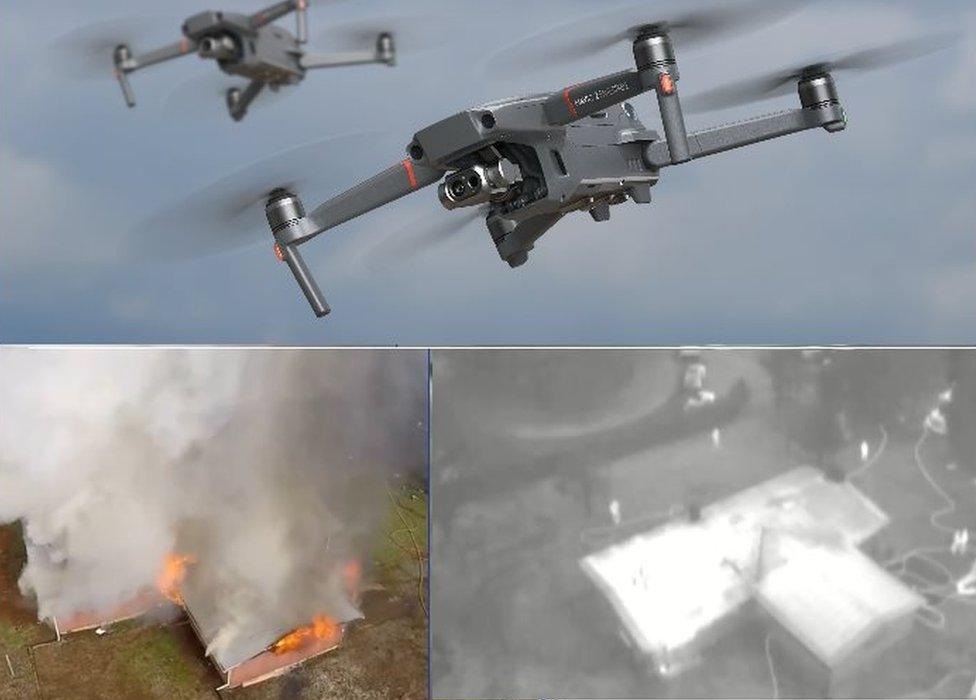
DJI's latest drone uses tech made by thermal camera-maker Flir
It can stream split-screen video feeds of a scene in both heat vision and the normal visible spectrum, which could be useful in search-and-rescue missions.
Astral AR is proposing something even more ambitious: an aircraft to stop school shootings.
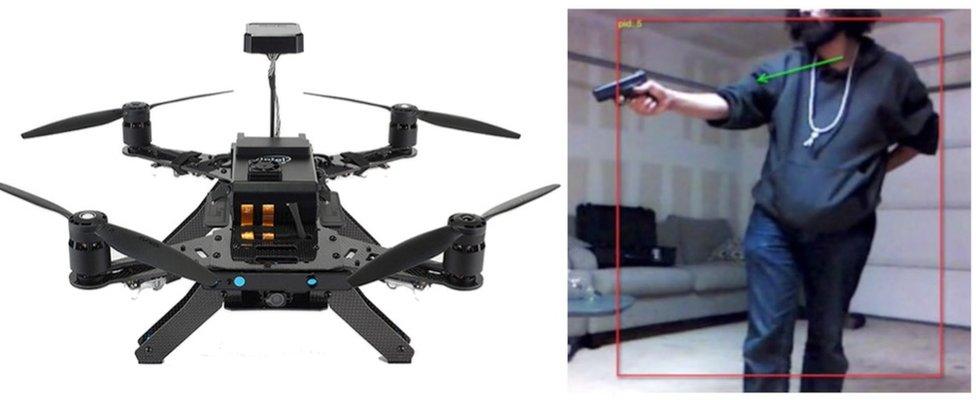
Astral AR is testing its software on an Intel-made drone before deciding whether to switch to a custom design
It claims drones could be used to obstruct an attacker and block their gunfire. An armour covering would supposedly make the machine difficult to destroy.
At present the team is testing its ability to track a shooter's gaze and pose by using a commercial drone, but in time it hopes to deploy a smaller custom-designed solution.
Sunflower Labs will propose what's perhaps a more realistic drone-based security system.
It's pairing an aircraft called the Bee with motion-detecting lamps to offer a hi-tech way to deter intruders from homes and other properties.
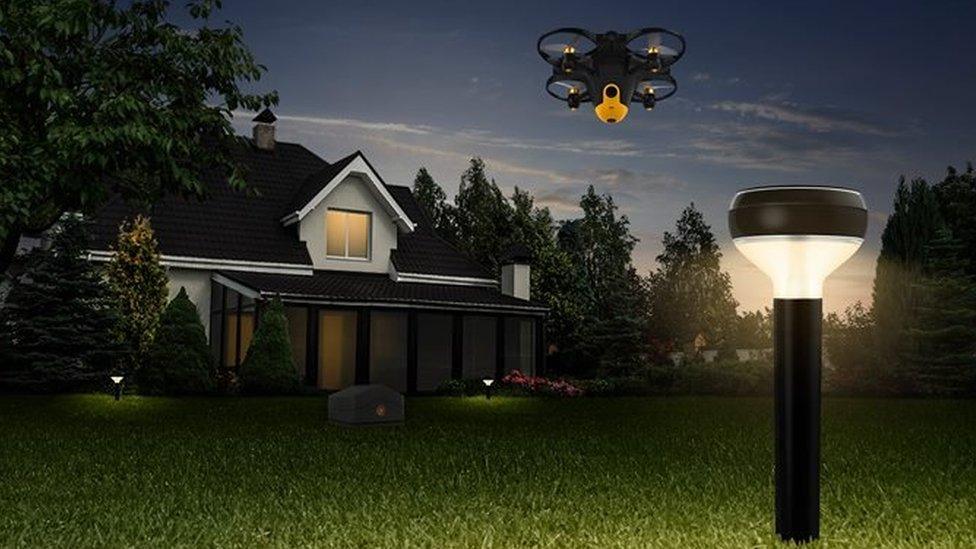
Sunflower Labs believes burglars would find drones harder to evade than standard security camera systems
Drones will also be taking to the deep, with several firms showing off models designed for use in the sea.
The idea is to provide a way to livestream scuba dives as well as to carry out inspections of boat hulls, underwater piping and other submerged objects.

Youcan Robot's BW Space is one of several drones being promoted to underwater video-makers

Transport
Expect to hear lots of talk about self-drive technologies, futuristic infotainment systems and 5G-based vehicle-to-vehicle data-swapping.
But with Detroit's giant Auto Show overlapping with CES's final day, many car-makers are keeping back their big news.

Mercedes intends to show off its one of its concept cars as well as the more practical 2020 CLA-Class saloon
Even so, Mercedes appears ready to unveil a second-generation version of its CLA-Class fastback saloon at the Vegas event, and Nissan is rumoured to debut the e-Plus version of its Leaf electric car, offering extended battery life.
Potentially more revolutionary, there will be at least two "flying cars" at the show.
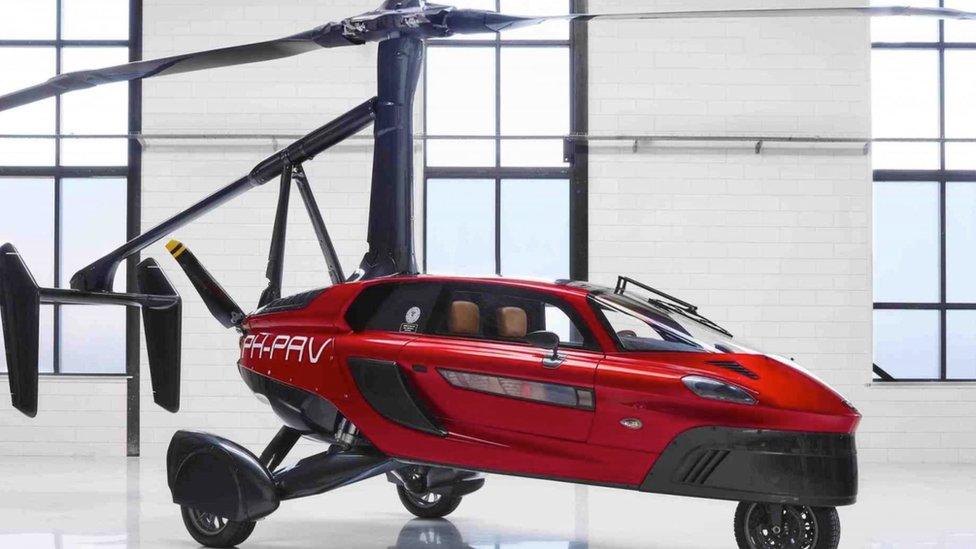
Despite resembling a helicopter, Pal-V Liberty is a gyroplane and does not take off vertically
The Pal-V Liberty is a petrol-powered three-wheeler with fold-out rotary blades on its roof and a propeller at its rear, whose makers say it is self-stabilising in the air. It's based on a 20-year-old concept, but its maker claims it will be ready to deliver the first working units in 2020.
NFT is at an earlier stage of development.
The firm - which is headquartered near Google - promises an electric vehicle that will take off and land vertically but fly like a plane. It intends to reveal what it will look like at the expo.
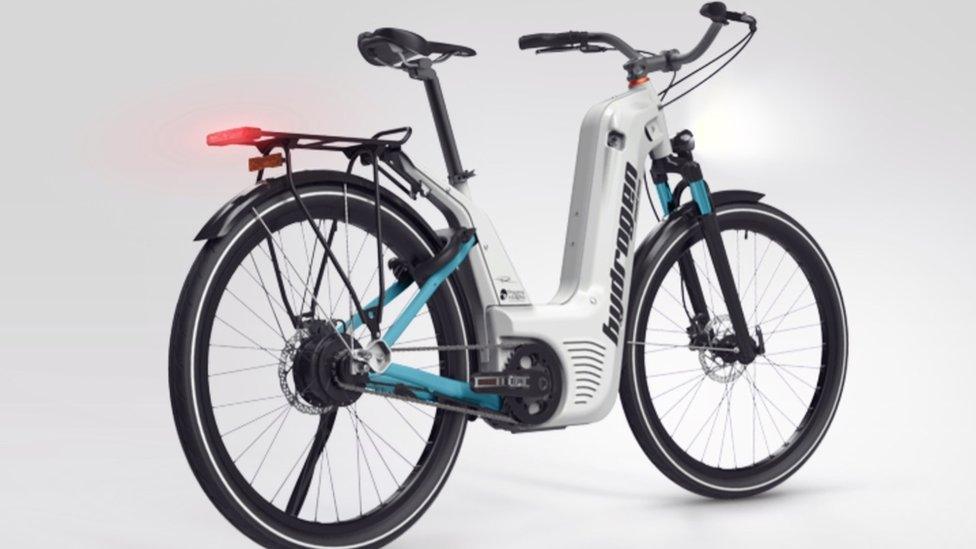
France's Pragma Industries says its hydrogen fuel cell bike is the first of its kind
Other exotic vehicles at the show with a lot to prove include Pragma Industries' Alpha bicycle, which is powered by a hydrogen fuel cell.
It says the vehicle will have double the range of li-ion battery-based equivalents and none of the hassle of waiting hours for a recharge.
Emerge will be showing off a scooter with a touchscreen steering wheel, which it says will discourage drivers from using their smartphones.
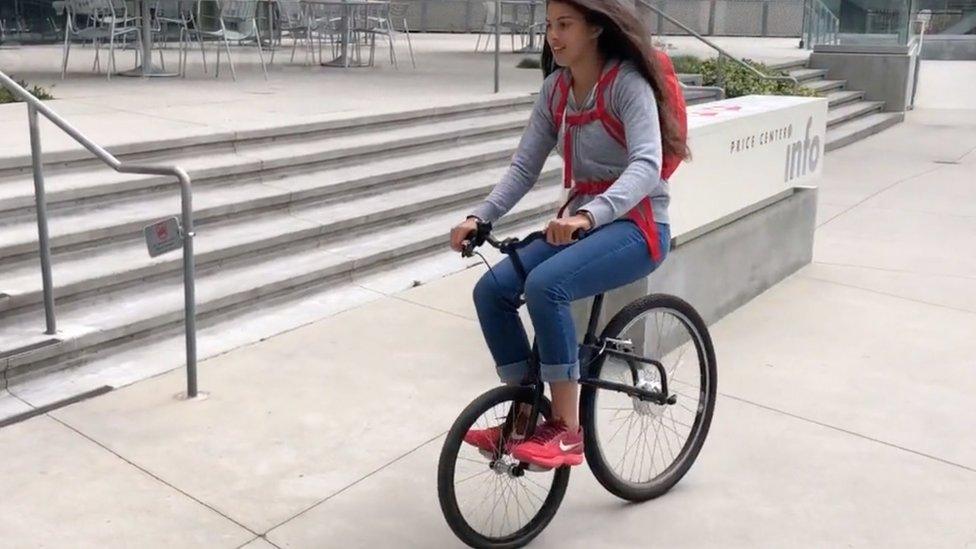
JackRabbit's bicycle can go 13 miles (21km) on a single charge
And JackRabbit has a modern-day take on the Penny Farthing bicycle - with one wheel bigger than the other and an electric motor.
It looks a bit awkward to ride but is supposedly nimble in use.

Blockchain and other curiosities
And there's still so much more.
For example, several start-ups are attempting to ride the hype-wave associated with blockchain and crypto-currencies.
They include a coin-mining TV and a sports score business that rewards accurate predictions with crypto-currency as a means to work around online gambling laws.
But the stand-out example may be Pigzbe - a handheld digital wallet targeted at six-year-olds that is supposed to replace pocket money.
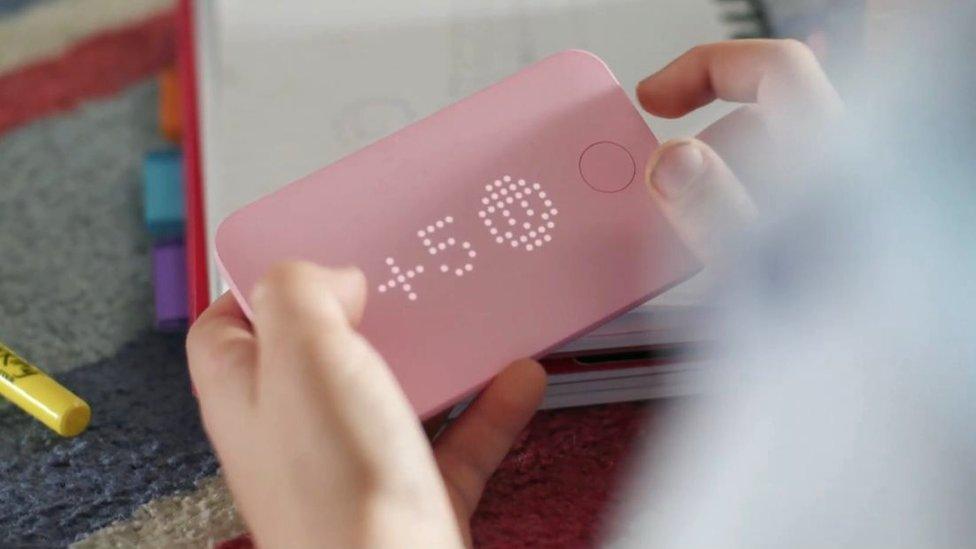
Pigzbe is designed to teach children about the wisdom of investing in crypto-currencies
Supposedly one of the benefits over just using an online bank account is that it doesn't involve decimals, with which some youngsters struggle.
But since it runs on a new digital currency, Wollo, you may end up having to explain why their savings have shrunk in value., external
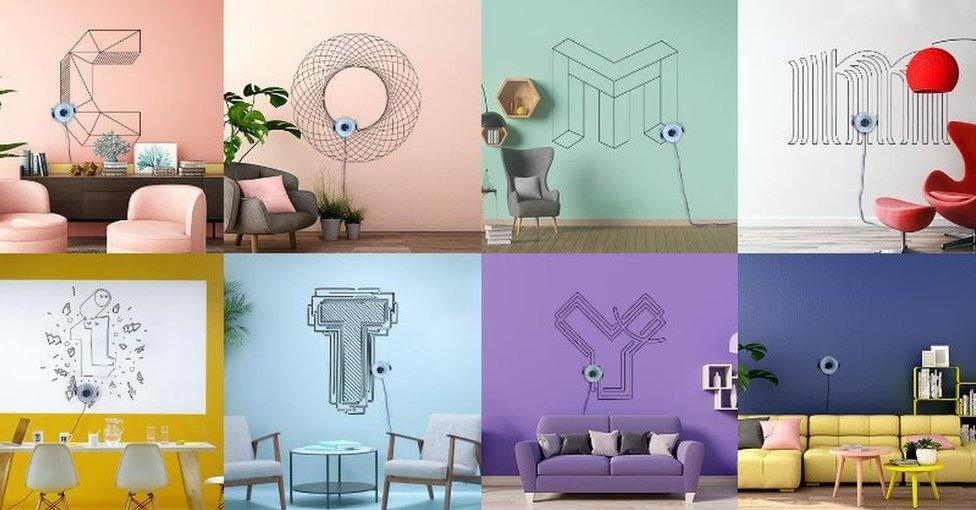
Scribit uses a new type of erasable ink to draw on walls and glass, but also works with third-party pens
There's a multitude of other new gizmos and apps on show - and here's a final selection that caught our eye.
Scribit is a wall-drawing gadget that turns images sourced from the web into line art. When users tire of them, it uses a heating element to make the ink vanish.
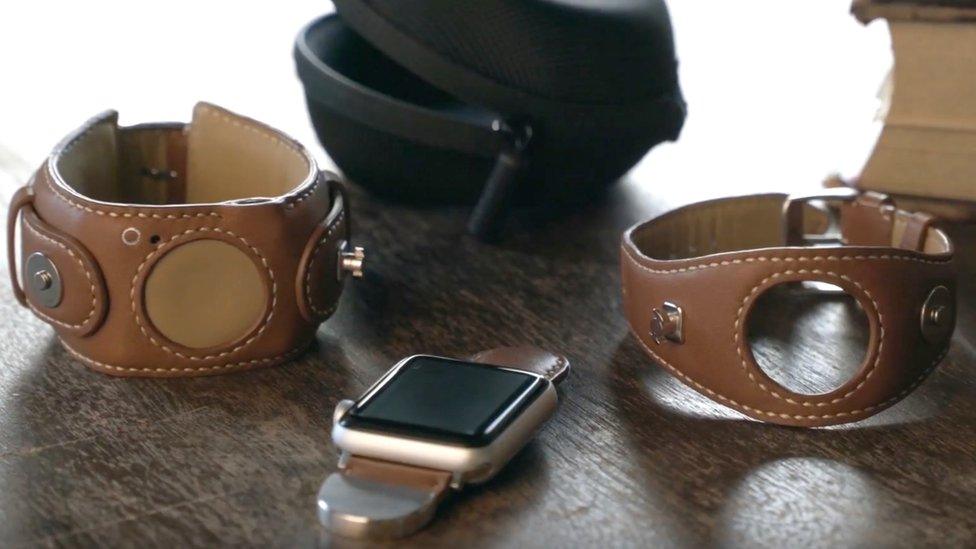
LiBest's product contains a battery that wraps around the wrist
LiBest has put a flexible battery in a wristband that can wirelessly charge an Apple Watch on the go and give it more than a day's battery life.
CoCoon is a smart beehive that automatically tackles a mite that harms the insects, and can summon help if other problems arise.

CoCoon says its hi-tech hive will help bees live longer and produce more honey
Finally, Audi and Disney are promising to show off the fruits of a two-year-long collaboration that they say has resulted in a completely new type of media designed to be experienced by backseat passengers. What can it be?
CES press day begins on Sunday 6 January and the show runs until Saturday 12 January.
You can follow all the BBC's coverage at bbc.com/ces2019 and keep track of the team involved via this Twitter list, external.
- Published5 January 2019
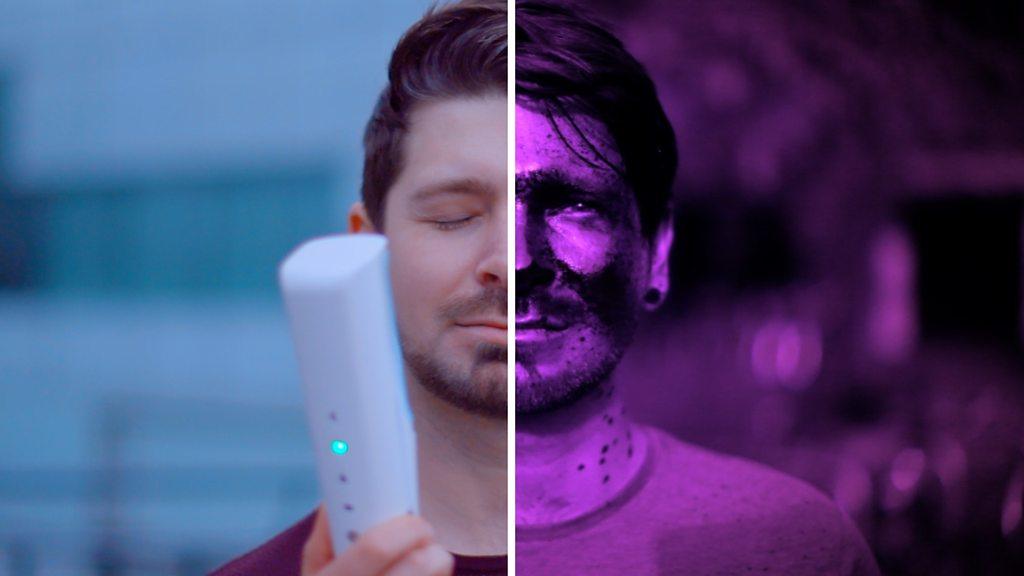
- Published5 January 2019
